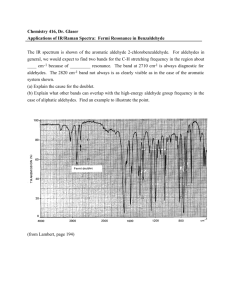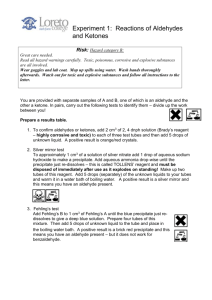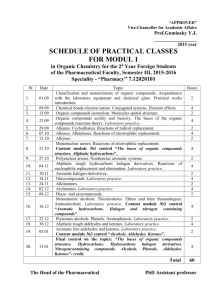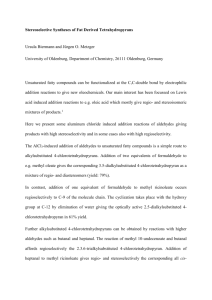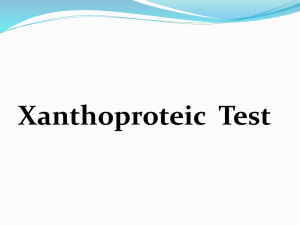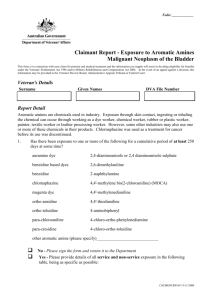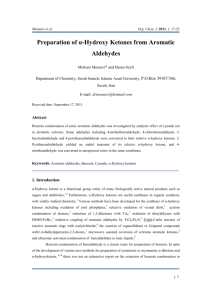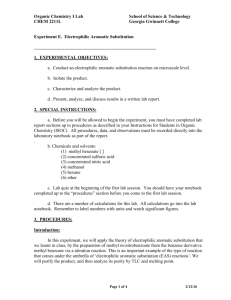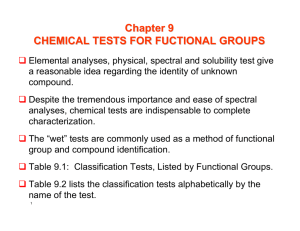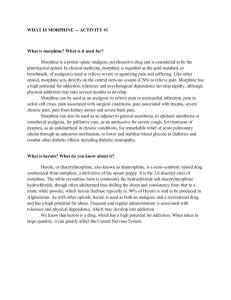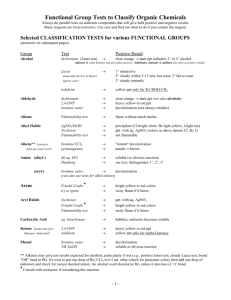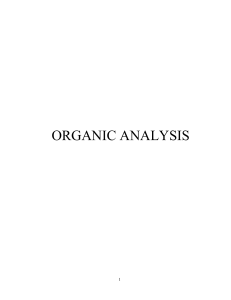Hydrocarbons – compounds that contain only carbon and hydrogen
advertisement
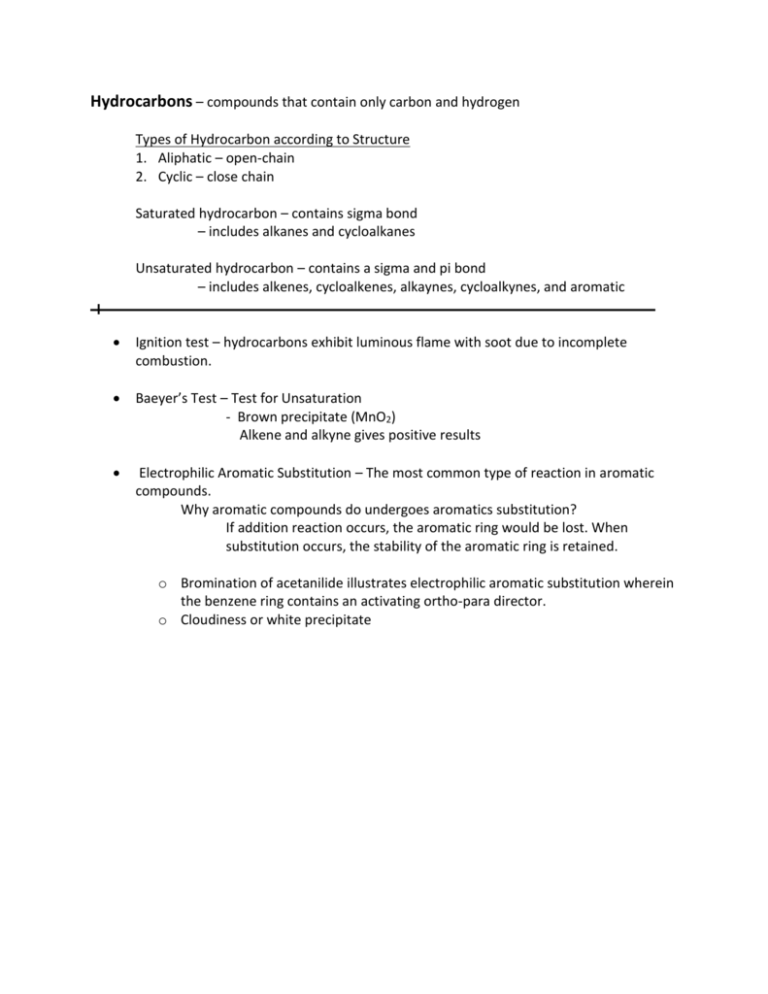
Hydrocarbons – compounds that contain only carbon and hydrogen Types of Hydrocarbon according to Structure 1. Aliphatic – open-chain 2. Cyclic – close chain Saturated hydrocarbon – contains sigma bond – includes alkanes and cycloalkanes Unsaturated hydrocarbon – contains a sigma and pi bond – includes alkenes, cycloalkenes, alkaynes, cycloalkynes, and aromatic Ignition test – hydrocarbons exhibit luminous flame with soot due to incomplete combustion. Baeyer’s Test – Test for Unsaturation - Brown precipitate (MnO2) Alkene and alkyne gives positive results Electrophilic Aromatic Substitution – The most common type of reaction in aromatic compounds. Why aromatic compounds do undergoes aromatics substitution? If addition reaction occurs, the aromatic ring would be lost. When substitution occurs, the stability of the aromatic ring is retained. o Bromination of acetanilide illustrates electrophilic aromatic substitution wherein the benzene ring contains an activating ortho-para director. o Cloudiness or white precipitate Alcohols – compounds that have hydroxyl groups bonded to saturated, sp3 hybridized, carbon – general formula: ROH Classification of Alcohol according to Alkyl Group 1. Primary (1O)– the carbon containing the –OH group is attached to one alkyl group. 2. Secondary (2O)– the carbon containing the –OH group is attached to two alkyl groups. 3. Tertiary (3O) – the carbon containing the –OH group is attached to three alkyl groups. Chromic Acid Test – Test for primary and secondary alcohol – Turquoise (blue-green) solution Lucas Test – Test for tertiary and secondary alcohol - Cloudiness; emulsion Esterification – Gummy odor o Methanol + Salicylic acid → Methyl salicylate Test for Methyl Alcohol – Red/Pink picric ring Iodoform Test – Test for methyl ketone – Yellow precipitate Acrolein Test – Test for Glycerol o Pungent odor – due to propenal Phenols – aromatic compounds with the –OH group directly bonded to benzene ring. – More acidic than alcohol – due to resonance stabilization. – The presence of electron-withdrawing groups such as NO2 and CN can further enhance acidity. Solubility in Alkali o Soluble in water Reaction with ferric chloride o Phenol – violet solution o Catechol – dark green solution o Thymol – yellow solution o Naphthol – light brown solution Bromine Water Test o Phenol – white precipitate o Salicylic acid – no precipitate Phenolphthalein Formation o Indicator o Acidic in nature o Turns pink in the presence of a base Millon’s Test – test for phenol Aldehydes, Ketones and Saccharides Aldehydes – contains a carbonyl group at the end of the carbon chain. – RCOH Ketones – contains a carbonyl group in the middle of the carbon chain. – RCOR 2,4-dinitrophenylhydrazine Test - Test for Carbonyl group Sodium Bisulfate Test- Test for Aldehydes and Methyl Ketones Schiff’s Test – Test for aldehydes o Purple solution Tollen’s Test – Test for aliphatic and aromatic aldehydes o Silver mirror Fehling’s Test – Test for Aliphatic aldehydes o Brick red precipitate (cuprous oxide) Sodium Nitroprusside Test – Test for presence of acetone o -Wine red solution Iodoform Test – Test for Methyl Ketones Special test for Benzaldehyde o Formation of crystals Molisch Test – General test for Carbohydrates o Violet ring (2nd layer) Bial’s Orcinol Test – Test for pentose Phenylhydrazine Test – Test for reducing sugars o Osazone crystals Optical rotation – property of a substance that could rotate the plane of polarization of a beam of polarized light. Carboxylic acid – RCOOH – React with strong bases (NaOH, KOH) to form water soluble salts. Test for carboxylic acid o Acetic acid – soluble in water and NaOH o Stearic acid – insoluble in water and NaOH Reaction with sodium carbonate o Effervescence – release of carbon dioxide Esterification o Acetic acid + n-propyl alcohol → propyl acetate o Benzoic acid + n-propyl alcohol → propyl benzoate Reaction with Neutral FeCl3 o Acetic acid – red-orange precipitate o Tartaric acid – effluence of red-orange precipitate Special Test for tartaric and citric acid o Citric acid – green solution → colorless solution o Tartaric acid – brown solution → colorless solution Hydroxamic test for esters o Magenta or burgundy solution Hydrolysis reactions o Acetic anhydride – blue litmus paper → red litmus paper o Acetamide – red litmus paper → blue litmus paper
